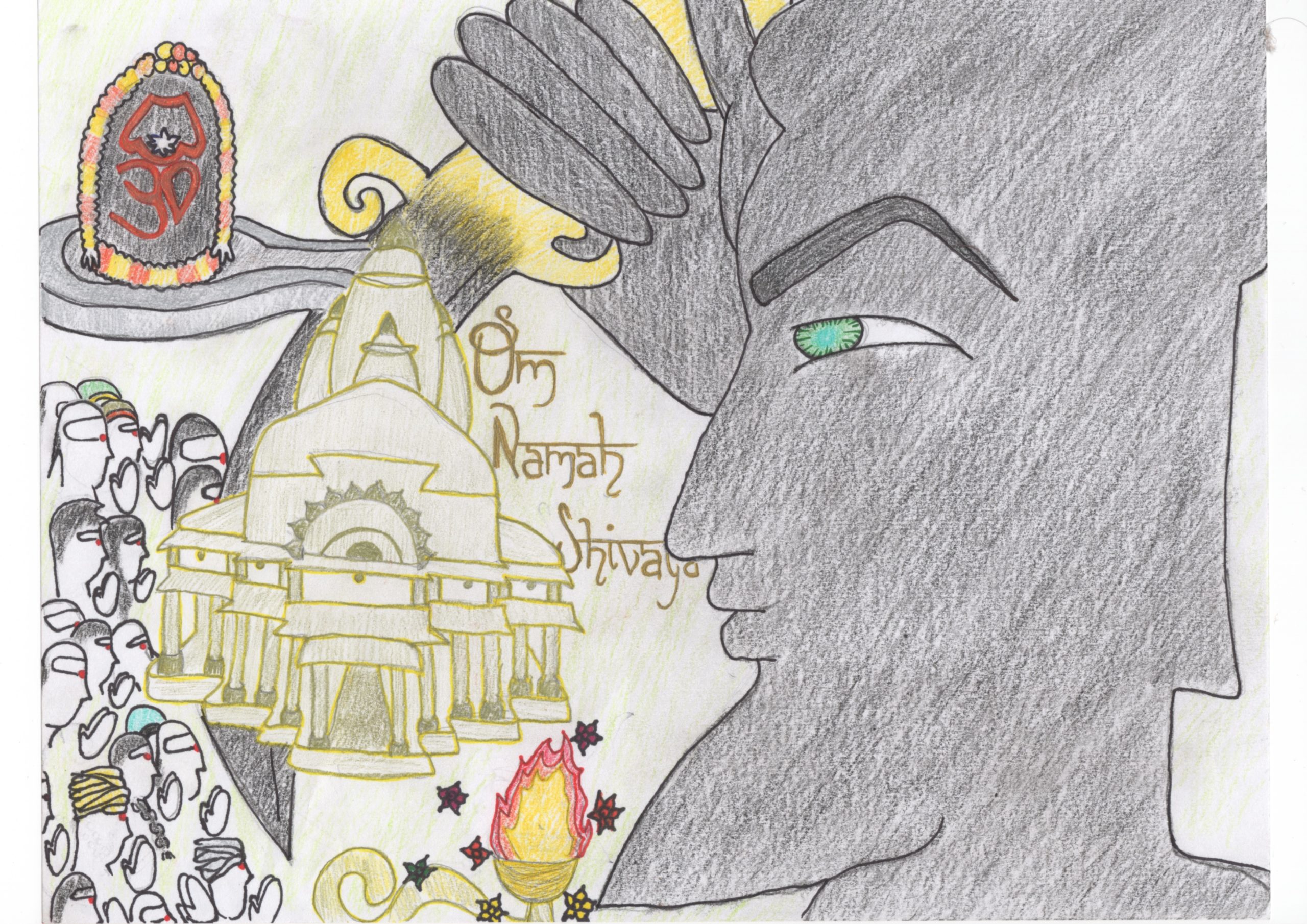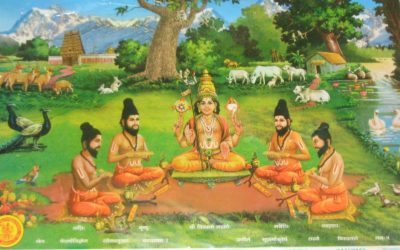Part 1 – Meeting Mahadeva
“Mahadev,” I thought, “What a beautiful word for handicapped.”
I was sitting in my friend’s car. She was driving me home, sharing stories about her Buddhist upbringing in Sri Lanka, after we had attended a lecture by a Tibetan Rinpoche in Vancouver. Although I had enjoyed his sense of humour and quick wit, I was feeling a bit disappointed; somehow, I knew that Rinpoche was not the teacher I had been yearning for, and Buddhism, though a beautiful tradition, didn’t feel like home. While Sabita continued sharing, my wandering attention drifted to the bumper on the van in front of us. Emblazoned on that bumper was the word “Mahadev,” nestled between two wheelchairs. Naturally, not being familiar at all with Sanskrit, I assumed it meant what was implied by those wheelchair logos, which are the universal sign for physical “Mahadeva!” This next thought popped into my mind seemingly out of nowhere, and authoritatively declared, “Mahadeva is not a word for handicapped; it’s the name of God.”
My spine straightened, my focus sharpened, and, wondering where that had come from, I decided as soon as I got home, I would do a Google search for the word “Mahadeva.” “If Mahadeva,” I thought, putting emphasis on that last ‘ah’ sound, which was not spelled on the bumper, yet my mysterious inner voice had pronounced, “is actually the name of a God, I’ll start following him immediately.”
That night, for the first time in this life, I saw Shiva. Through eyes made blurry with instant tears, I skipped right past the web results to the row of images my fateful search had generated: Nataraja dancing, Dakshinamoorthy under the banyan tree, Yogeshwara sitting in padmasana… I could hardly believe what I was seeing. The most beautiful paintings in the world were showing me God, and lo and behold, His name actually was Mahadeva. Looking more closely, my hands spontaneous moved into anjali mudra, and I whispered, “Thank You, Mahadeva.”
From that night on, having been introduced to the Lord of Lords in such a way that I couldn’t possibly doubt the reality of who He was, without truly knowing what the religion involved, I started to call myself a Hindu.
Fast forward a few of months, and Existence had blessed me with a job doing something I really loved: reading Tarot cards in a mystical little shop in a touristy part of town. On my first day, a friend had gifted me with a deck that was made up of cards representing spiritual teachers from every ancient tradition- Celtic, Norse, Egyptian, Native American, Japanese, etc. Of course, my favourite cards in the deck with those from India, among which one, in particular, stood out: Babaji. The booklet accompanying the deck didn’t give much background information about the master, it mentioned only that Babaji is also called “Mahavatar,” meaning the greatest among all avatars, and that the message he brings is Yoga. What made Babaji stand out was the fact that every time I gave a reading, whether for myself or for someone else, the very first card pulled was always his.
“Babaji’s message to humanity,” the first website said, when finally, one night, after a few weeks of amazement at Babaji’s continuous appearance in my readings, I did my life’s next fateful Google search, “is this: if you’re seeking enlightenment, chant the mahamantra ‘Om Namah Shivaya’ continuously.”
That’s as much as I needed to read. Shiva, Mahadeva, was already my beloved God; and I was seeking enlightenment. From my first day on the job reading cards, I had started praying for enlightenment, deciding that the only way my advice would be useful for others was if it came from a place of divine consciousness. Since Babaji said that chanting Shiva mantra continuously would grant it, there was nothing else for me to do but start chanting. I turned off all the lights in my apartment, locked the door, unplugged the land line, switched my mobile to silent, then sat down on the floor and started to repeat, “Om Namah Shivaya, Om Namah Shivaya, Om Namah Shivaya…”
Throughout the next day, my inner chanting continued. Whenever I was alone, I chanted aloud; when I was in public, I chanted in my mind; when I had to, I would talk with other people, but as soon as I was left alone, I resumed what I now know is called mantra
At the end of day two, I was inwardly chanting the mantra on my way home from work, when suddenly something strange happened: I was on a crowded bus, surrounded by commuters at rush hour. I could see them talking on their phones, and I could sense commotion outside, but suddenly, I couldn’t hear a thing. It was like I had been struck deaf, and the silence was so shocking to me that I forgot my inner mantra. Just then, a thought popped into my mind, not unlike the thought that had first introduced me to Mahadeva. It said:“This is Babaji, answering your prayer.”
That moment, I turned to look out the window, and saw Him. Not the Mahadeva from the illustrations on Google, but a photo of an actual person. He was dressed in orange, with glowing eyes and a huge smile, and the caption beneath His picture said, “Kalpataru! Don’t Miss It!”
Before the bus could drag me away from that divine sign, I pulled the bell, which I heard, jumped off, and ran back to look at Him more closely. I didn’t stand there for more than a few moments before a door opened, and a lady dressed all in white, with a halo of curly hair and the bluest eyes I’ve ever seen, reached for my hands and pulled me into a little shop saying, “You’re here to do Paramahamsa Nithyananda’s meditation. Please leave your shoes, turn off your phone, and come inside…”
(To be continued…)





0 Comments